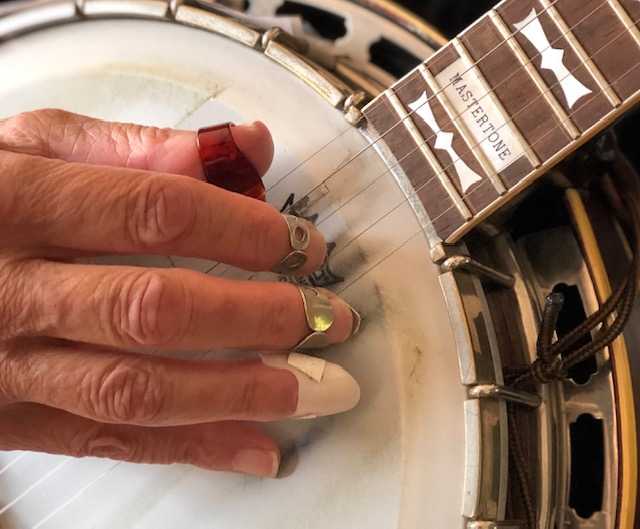
The BRC founder`s older brother played trumpet in a Dixieland band during college and became interested in the tenor banjo. With the arrival of the Folk Revival around 1960, both he and his younger brother were attracted to the curious 5-string version of this instrument. Sixty-one birthdays ago, the BRC founder and his jazz musician brother built their first long neck banjos from damaged parts purchased at a fire sale. The twosome honed their picking skills together for years, but the younger sibling did not build another 5-stringer for half a century. The two brothers got busy being bone doctors in distant cities, and the BRC craftsman received an occasional thematic (Hallmark) birthday card.
In recent years, hand-crafted birthday greetings (below) are now provided by grandchildren.
This Spring, the BRC founder shared a birthday occasion with another senior fellow musician at an outdoor springtime jam session (below) where both were gifted celebratory cupcakes, each adorned with a solitary commemorative candle.
From the birthday guys: be well, be safe, be vaccinated.



















